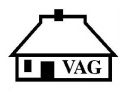Dendrochronology Database
Vernacular Architecture Group (VAG), 2000. (updated 2024) https://doi.org/10.5284/1116910. How to cite using this DOI
Data copyright © Vernacular Architecture Group (VAG) unless otherwise stated
This work is licensed under the ADS Terms of Use and Access.
Primary contact
Vernacular Architecture Group (VAG)
84 Derby Road
Spondon
Derbyshire
DE21 7LX
Resource identifiers
- ADS Collection: 282
- DOI:https://doi.org/10.5284/1116910
- How to cite using this DOI
Full Record - Norton St Philip, The George Inn
| Location | Norton St Philip, The George Inn, Somerset |
|---|---|
| Grid reference | ST 775 560 |
| Description | The George Inn is a large rectangular stone building of three floors, originally the property of the Carthusian Priory of Hinton Charterhouse. It is believed to have been built in the fourteenth century as an Inn or Guesthouse, with some use as a market house for the sale and storage of linen cloth during the two annual cloth fairs. The building was re-roofed and given a jettied timber front in the 15th century. The front and roof are revealed by the tree-ring dating both to date to 1431, and not to be of different dates as previously thought (Williams, E H D, Penoyre, J and J, and Hale, B C H, 'The George Inn, Norton St Philip', Archeol. J. 144 (1987) 317-327). The roof is now of nine bays, with eight open or closed collar and tie-beam trusses and two arch-brace trusses over the hall (apexes type M). Originally the building was longer, probably by two bays. A large galleried open well at first and second floor levels, contemporary with the 1431 re-build, was formed with moulded trimming beams over the two bays of the three-bay hall, revealing the arch-braced roof to the ground floor. The opening was closed in 1510, the tree-ring felling date of the infilling joists. The building is documented as being an inn in the sixteenth century, the infill being part of the updating when the stone fireplaces were installed.(d-e) To the south, across a small courtyard, is a barn comprising three collar-rafter trusses with threaded purlins, tree-ring dated to 1457/8. The easternmost truss was later replaced in similar form, (estimated felling date range 1531-1560). As with the main north range, the barn appears subsequently to have been truncated at the eastern end.(f-g) Forming the eastern side of the courtyard is a four-bayed range of which the northern half is floored over, whilst the southern half adjacent to the barn still remains open to the roof, dendro-dated to 1478. This part of the range appears to have served as an open hall as evidenced by the soot encrustation on the roof structure. The roof consists of tiebeam and collar trusses and two sets of butt purlins. An unusual feature is the distinctive tiebeams in which the middle third is cranked. One of the tiebeam ends had suffered from a fire and was repaired in 1746.The western range is a complex galleried composition of several stages of building. However, none of the samples taken from this area dated. Dating initially funded by the SVBRG and extended by English Heritage to include the rear ranges. The whole complex is being studied and re-appraised by Kirsty Rodwell in advance of a comprehensive refurbishment of the complex. |
| Type of Building | Inn |
| Type of Structure | Arch-braced trusses |
| DATES | |
| Type of date | Tree-ring (ring width) date. |
| Felling Date Range | 1430 - 1432 |
| Period | Medieval |
| Century | 15 |
| Date | 1430-32 |
| Secondary date(s) | 1509-10 1457-8 1531-60 1477 1746 |
| IDENTIFIERS | |
| VA Volume No. | 29 |
| VA Page No. | 124 |
| List sequence id | 1045 |
| Laboratory | Oxford Dendrochronology Laboratory (and predecessors) |
Cite record using this URL: http://archaeologydataservice.ac.uk/archives/view/vag_dendro/full_record.cfm?id=1045
Other dates from a similar location...
View Norton St Philip, Lodge Farm, Somerset
View Norton St Philip, Wick Farm House, Somerset
View Norton St Philip, Farleigh Hungerford Castle, Somerset
View Norton St Philip, Farleigh Hungerford Castle, Somerset





